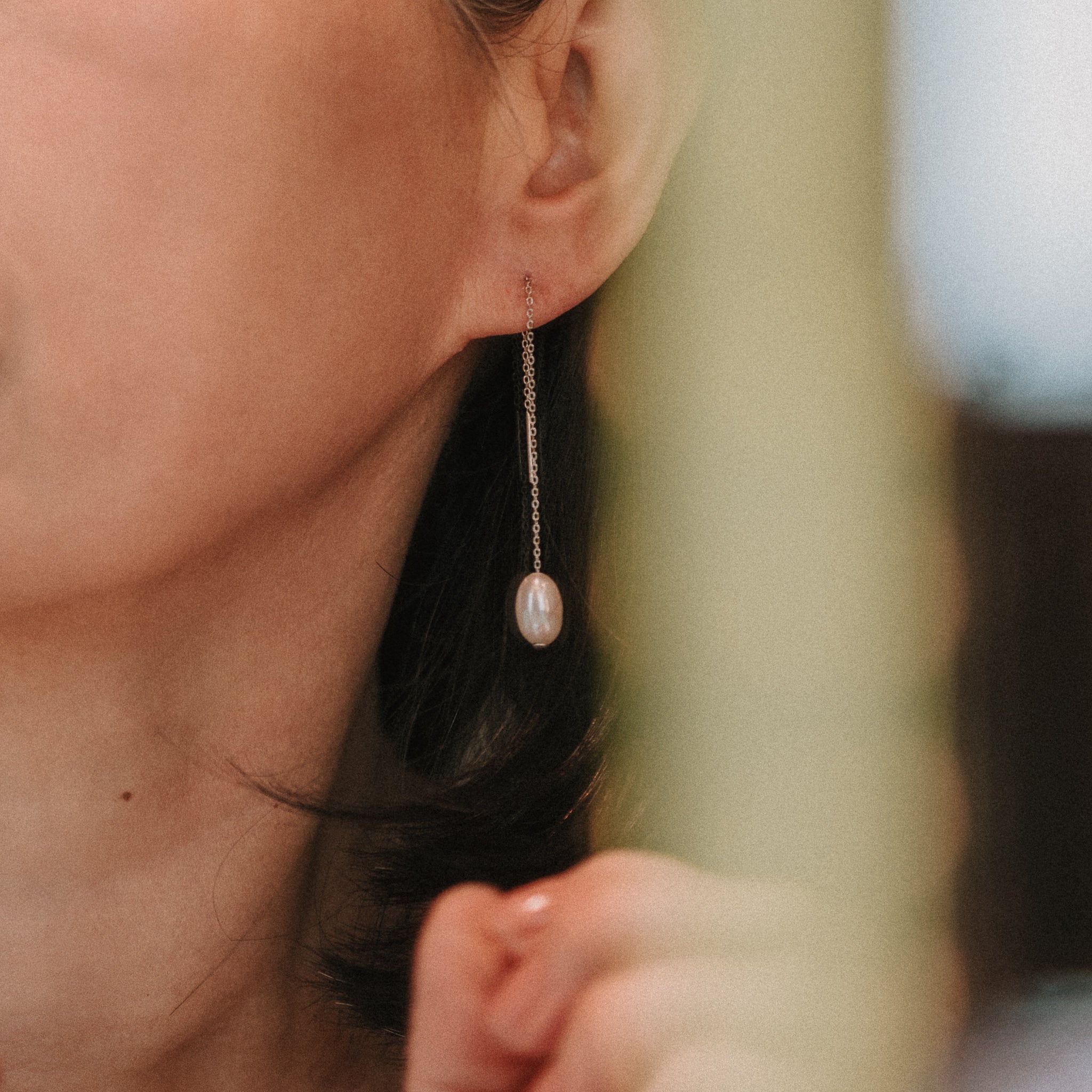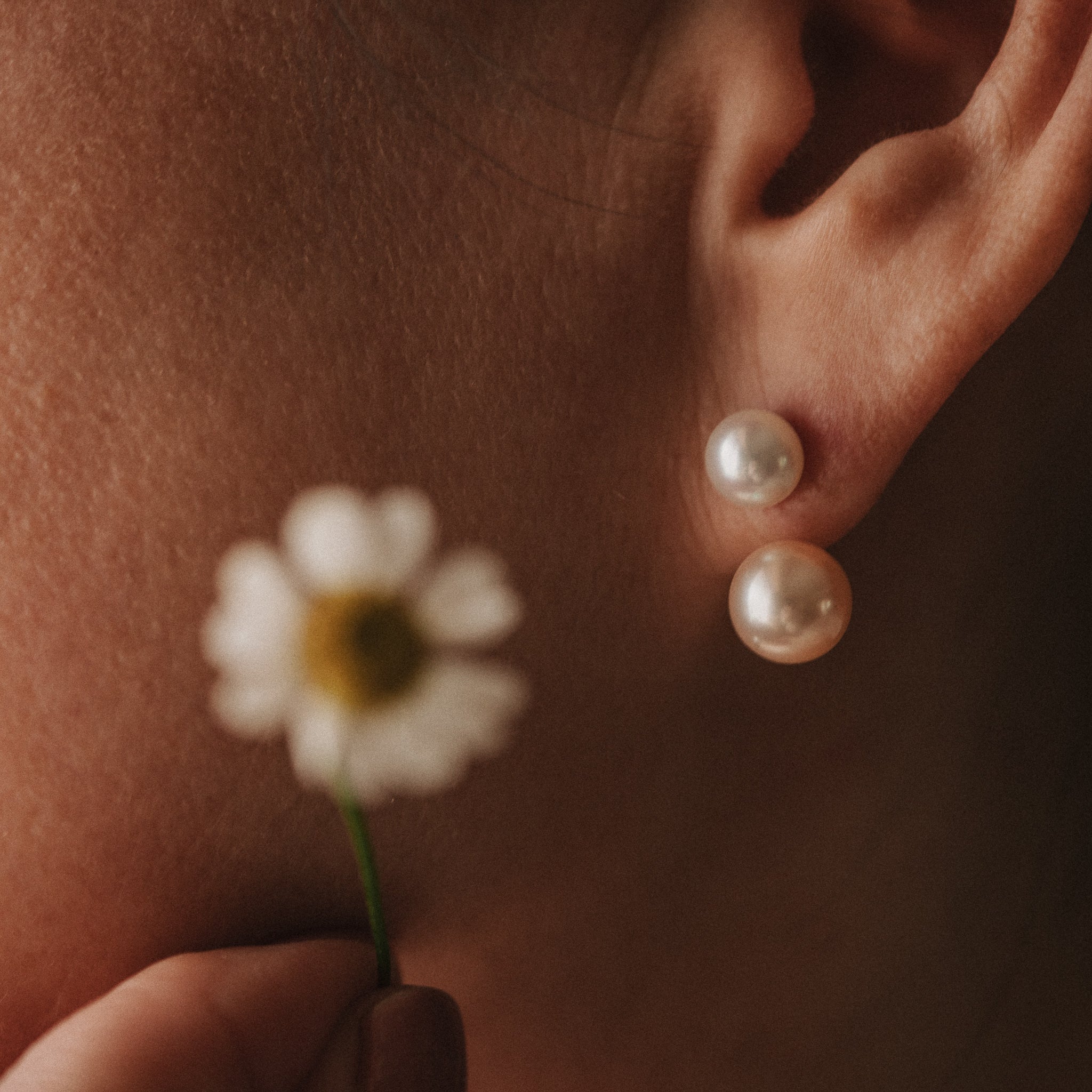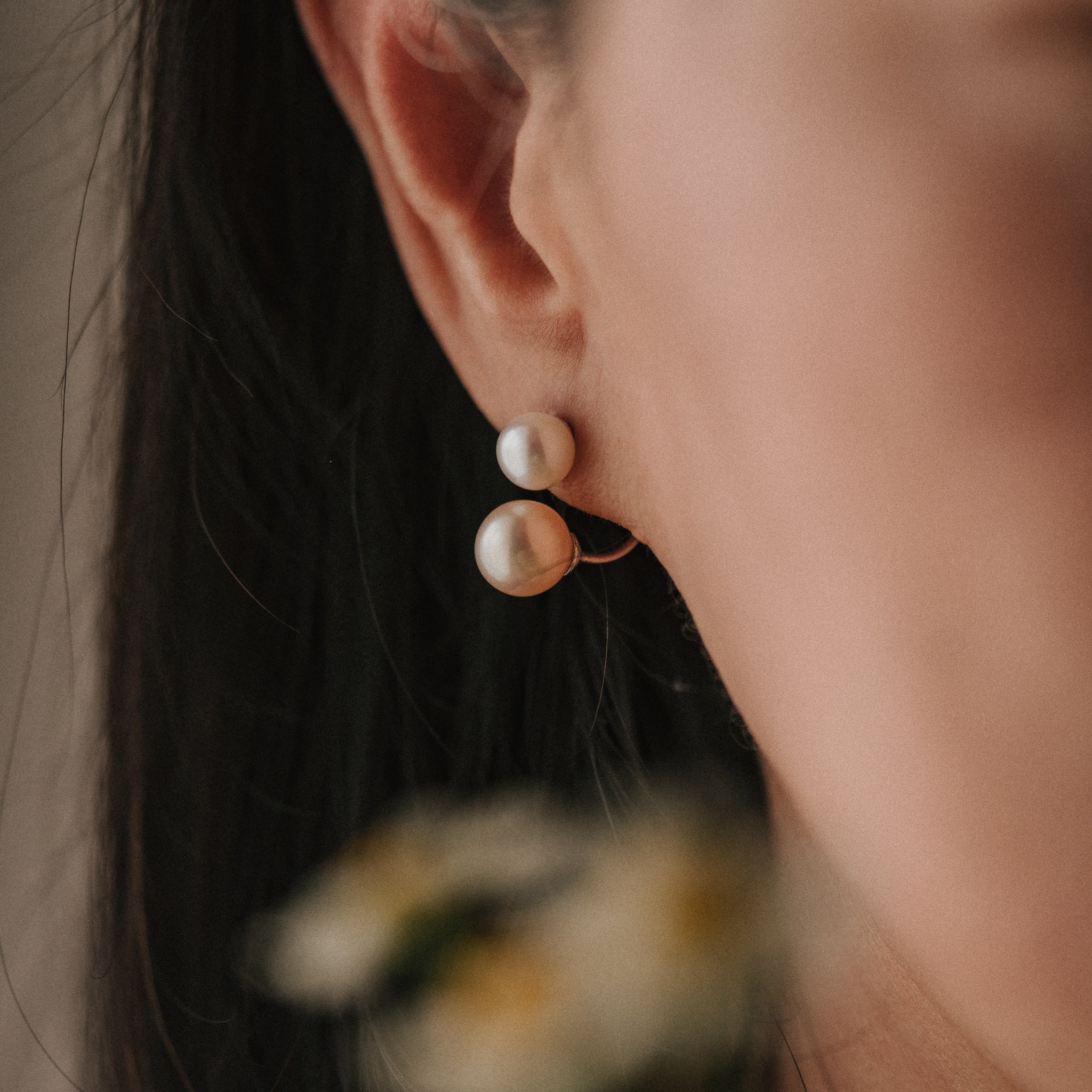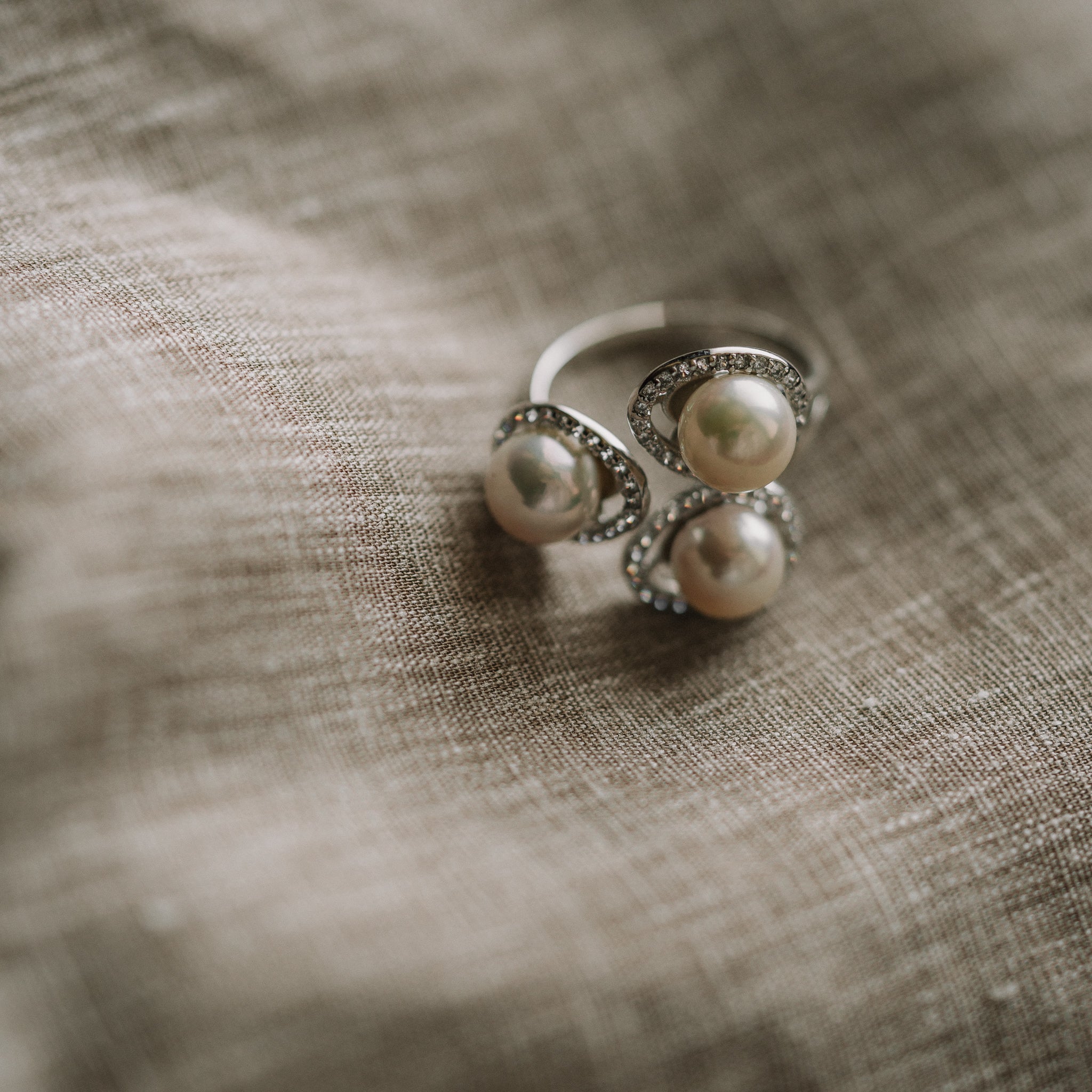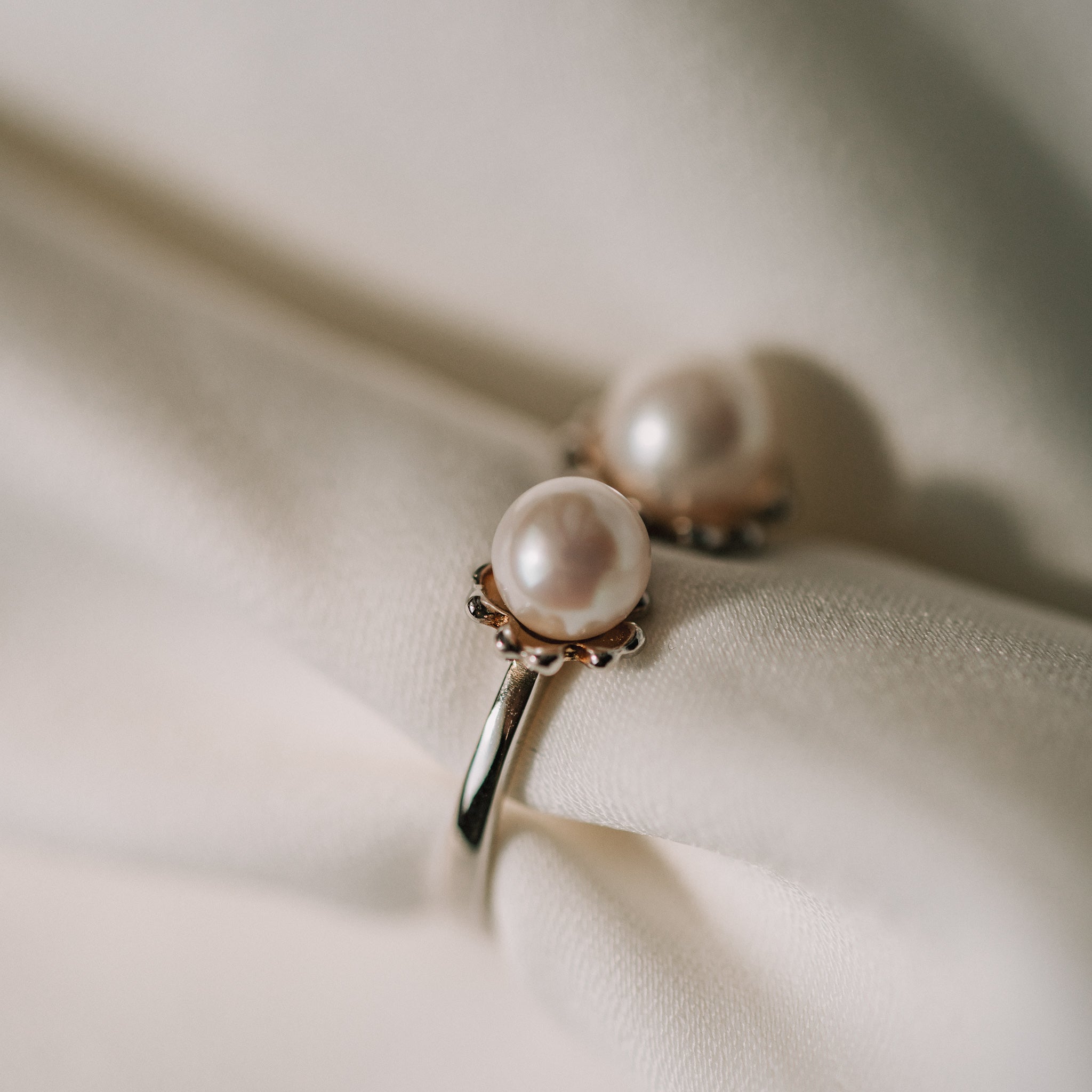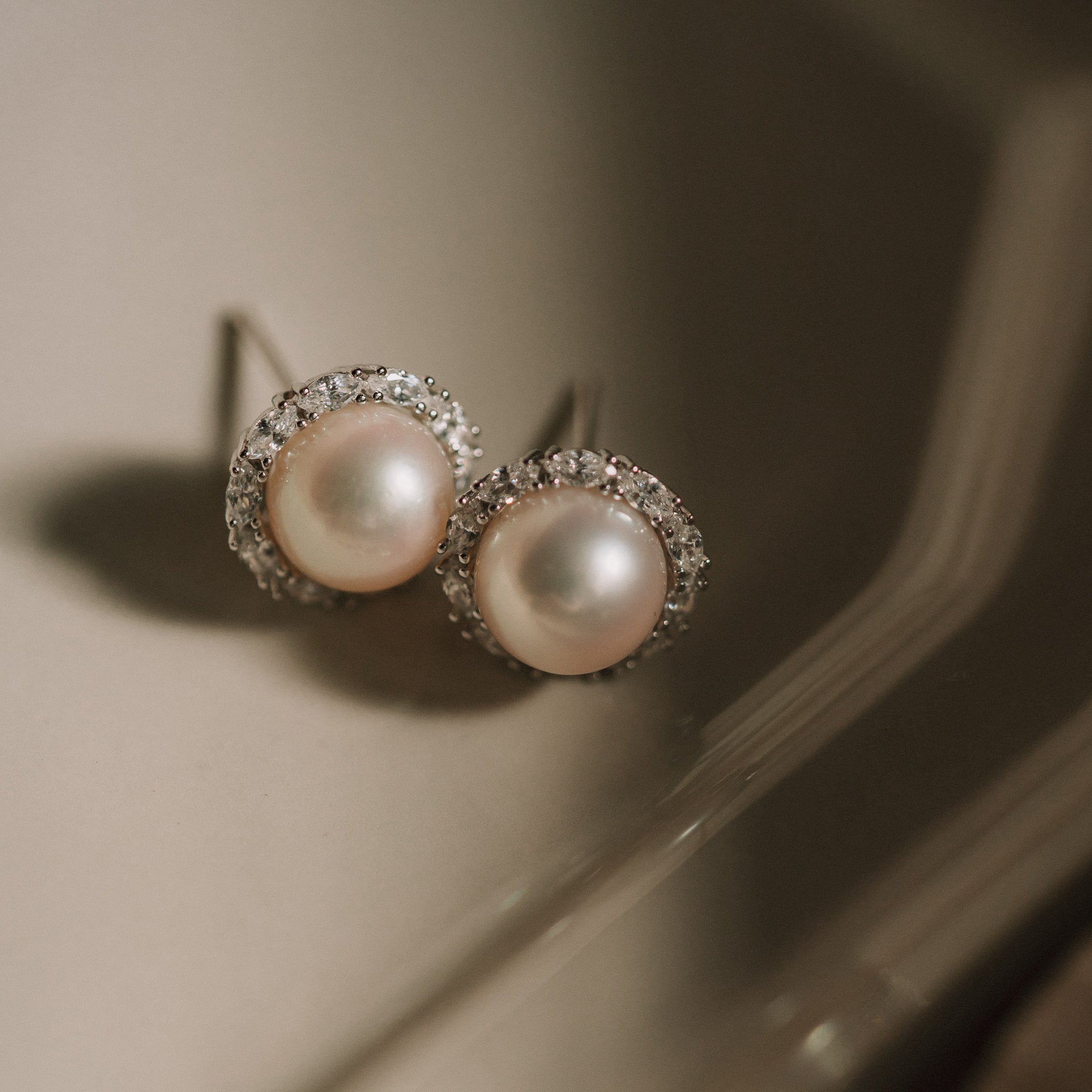Pearls, renowned for their unique luster and gentle texture, have long been hailed as the "Queen of Gems." But did you know that there's a vast array of pearl varieties, each with its own story and distinctive allure, stemming from different environments and organisms? Today, we'll take you on a journey to explore some of the most common and rare pearl types, including South Sea pearls, Japanese Akoya pearls, freshwater pearls, conch pearls, Melo pearls, oyster pearls, and giant clam pearls, uncovering their captivating features and characteristics.
-
South Sea Pearls Considered one of the crown jewels of the pearl world, South Sea pearls are cultivated from the large silver or gold-lip oysters found in the South Pacific, primarily in Australia, Indonesia, and the Philippines. These pearls are typically larger, ranging from 10 to 20 millimeters in diameter, and come in a spectrum of colors from silvery-white, golden, to creamy. Renowned for their soft luster and elegant hues, especially the golden South Sea pearls, they are highly sought after by collectors.
-
Japanese Akoya Pearls When people think of pearls, Japanese Akoya pearls often come to mind. These are the classic saltwater pearls widely used in traditional pearl necklaces and earrings. Akoya pearls are famous for their near-perfect round shape and brilliant luster. They typically range from 5 to 9 millimeters in diameter and come in colors from snowy white and silver to rosy pink. Originating primarily from Japan and coastal China, these pearls are known for their superior quality and elegant sophistication, making them a timeless choice for many.
-
Freshwater Pearls Freshwater pearls are cultivated in freshwater rivers and lakes, primarily in China. They are the most abundant type of pearl in the world. Unlike other pearls, freshwater pearls don't require a nucleus, resulting in a wide variety of shapes, from nearly round to baroque. They come in a broad range of sizes, from 4 to 12 millimeters, and colors, including white, pink, purple, and light orange. Freshwater pearls are popular for their affordability, diverse styles, and suitability for everyday wear.
-
Conch Pearls Conch pearls originate from the Caribbean conch, a large sea snail. Unlike oysters, these pearls are formed naturally within the conch shell. Known for their vibrant pink or salmon color and unique "flame" pattern, conch pearls are quite rare. They are typically smaller, less than 6 millimeters in diameter, and often irregularly shaped. Due to their scarcity and inability to be cultured, conch pearls are highly sought after by pearl collectors.
-
Melo Pearls Similar to conch pearls, Melo pearls are also produced by sea snails, specifically the Melo melo found in Southeast Asia. These pearls come in a range of colors from orange and pale yellow to creamy white, with the bright orange variety being the most prized. Melo pearls have a smooth surface and are usually round or oval. Their rarity and inability to be cultured make them valuable collectibles in the pearl market.
-
Oyster Pearls and Giant Clam Pearls Oyster pearls and giant clam pearls are exceptionally rare natural pearls. Oyster pearls are produced by common oysters but are less common due to the difficulty of culturing and the thinner nacre layers. They often have irregular shapes. Giant clam pearls, on the other hand, are derived from massive giant clams and are typically larger with colors ranging from white to creamy yellow. Due to their extreme rarity, these pearls are considered high-end collectibles.
From the classic South Sea and Japanese Akoya pearls to the rare conch and Melo pearls, each pearl variety possesses its own unique allure and story. Whether you prefer the everyday elegance of freshwater pearls or the exclusive allure of rare collectibles, these natural treasures offer a captivating array of colors, shapes, and sizes.
Freshwater Pearl
The Gentle Beauty from Rivers and Lakes – Treasured for their variety of shapes and affordable prices, our carefully curated selection of high-quality freshwater pearls offers something for everyone.
From $3,980.00 - $4,788.00
$4,368.00
$1,880.00
$5,300.00
$1,080.00
2 Color(s) Available
$4,800.00
$5,040.00
Akoya Pearl
An Elegant Gift from the Sea's Depths – Akoya pearls, famed for their unique brilliance and perfectly spherical shape, are affectionately known as "little light bulbs."
$4,320.00
2 Color(s) Available
From $9,000.00 - $16,800.00
$4,280.00
$4,500.00
$11,520.00
2 Color(s) Available
From $3,120.00 - $9,360.00
2 Color(s) Available
From $12,000.00 - $15,000.00
South Sea Pearl
Introducing the Majestic South Sea Pearl – Cultivated in the pristine waters of the South Pacific, South Sea pearls are celebrated for their impressive size, perfectly round shape, and captivating luster, earning them the prestigious title "Queen of Pearls."
$19,600.00
$19,200.00
From $33,480.00 - $48,000.00
From $14,760.00 - $30,720.00






